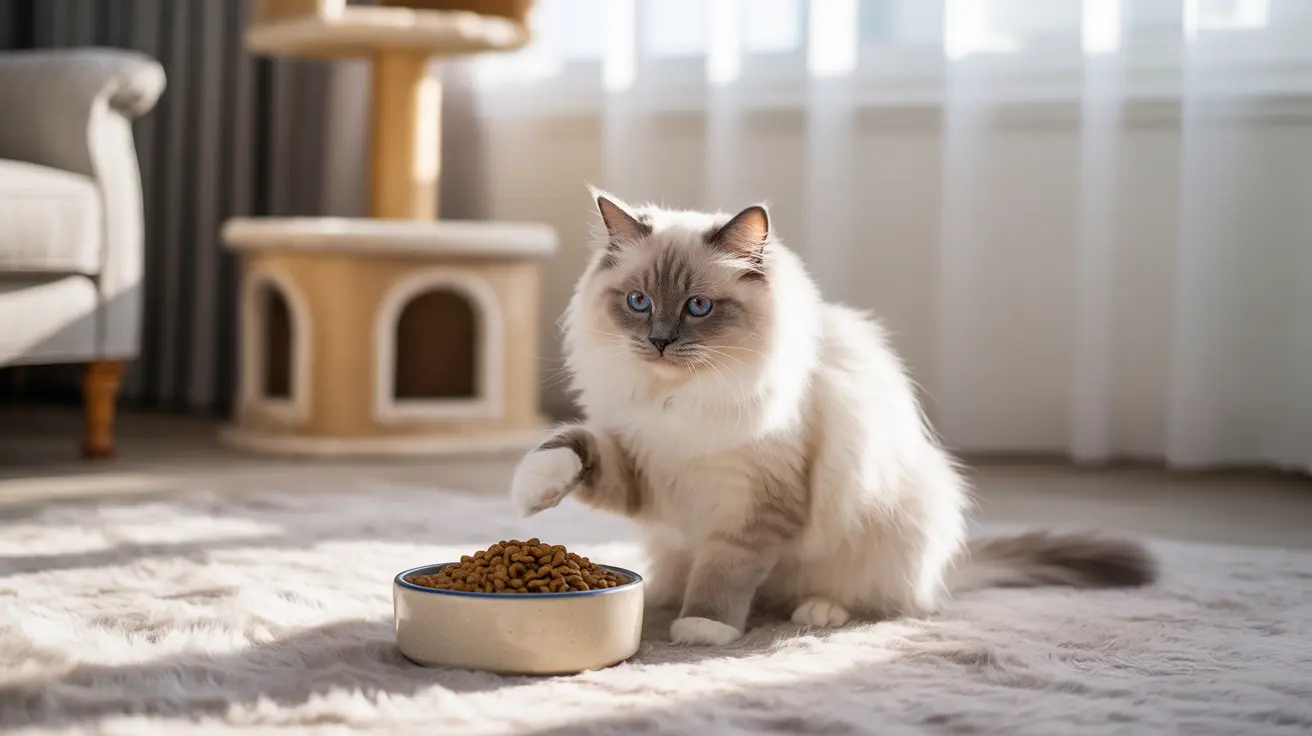Natural Instincts Behind Floor Pawing
Cats are driven by powerful evolutionary instincts that manifest in various behaviors, including pawing at the floor. This action stems from their wild ancestors' need to survive, hunt, and protect themselves. When your cat paws at the floor, they might be acting on several different natural impulses:
Territorial Marking
Cats have scent glands in their paw pads that release pheromones when they scratch or paw at surfaces. This marking behavior helps establish their territory and creates familiar scent markers that help them feel secure in their environment.
Hunting Behavior
Sometimes, cats paw at the floor because they hear or sense potential prey beneath the surface. Their sensitive hearing can detect small animals or insects moving under floorboards, triggering their hunting instincts.
Food-Related Pawing Behaviors
One of the most common situations where cats paw at the floor is around their food and water bowls. This behavior has several potential explanations:
Food Caching
In the wild, cats would bury leftover food to hide it from other predators and preserve it for later consumption. Your domestic cat may instinctively try to "bury" their food bowl, even when there's no practical need to do so.
Bowl Assessment
Some cats paw around their food area to check the security of their eating spot or to establish a comfortable feeding zone. This behavior can also indicate that they're trying to move their food to a preferred location.
Comfort and Communication
Floor pawing can also be related to a cat's emotional state and their need to communicate with their environment:
Kneading Behavior
When cats rhythmically push their paws against the floor, they might be engaging in kneading behavior, which is associated with comfort and contentment. This behavior originates from kittenhood and can continue throughout their adult life.
Stress Relief
Some cats paw at the floor as a way to release energy or anxiety. This behavior can be particularly noticeable in new environments or during times of change.
When to Be Concerned
While floor pawing is typically normal behavior, certain patterns might indicate underlying issues:
- Excessive or obsessive pawing
- Sudden changes in pawing behavior
- Signs of distress while pawing
- Pawing accompanied by other behavioral changes
If you notice any of these warning signs, consulting with your veterinarian can help rule out potential health concerns.
Frequently Asked Questions
Why does my cat keep pawing or scratching at the floor around their food bowl?
This behavior typically stems from the instinct to bury or cache food. In the wild, cats would cover their leftover food to hide it from predators and preserve it for later. Your domestic cat is following this natural instinct, even though it's not necessary in a home environment.
What does it mean when my cat paws at the floor and digs near their food or water?
This digging behavior can indicate several things: attempting to bury excess food, marking territory around their feeding area, or expressing dissatisfaction with the food's location or presentation. It's generally normal behavior unless accompanied by signs of distress.
How can I tell the difference between my cat kneading the floor and scratching it?
Kneading involves a rhythmic, alternating push of the paws with claws typically retracted, often accompanied by purring and a relaxed posture. Scratching is more vigorous, involves extended claws, and is usually a shorter, more purposeful action.
Why does my cat scratch the floor after using the litter box or outside it?
This is a natural instinct to cover their waste and mark their territory. If your cat scratches outside the litter box, it might indicate that the box is too small, too dirty, or the litter type isn't to their liking.
When should I be concerned about my cat's excessive floor pawing or scratching behavior?
Be concerned if you notice sudden increases in pawing behavior, signs of anxiety or distress while pawing, obsessive pawing in one area, or if the behavior is accompanied by other changes in appetite, energy levels, or general demeanor. These could indicate underlying health issues or stress that should be evaluated by a veterinarian.






